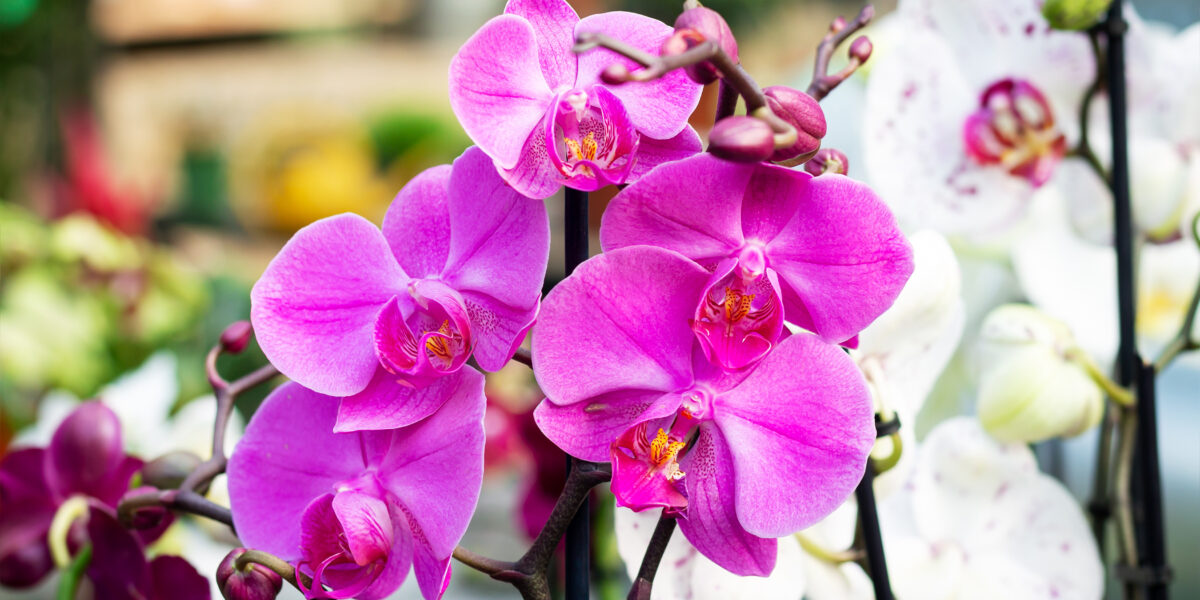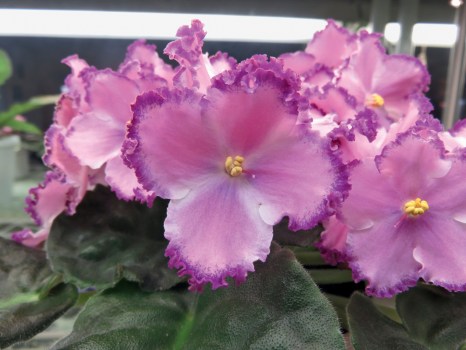Indoor gardening with orchids brings exotic beauty to your home. These flowers require specific care to thrive.
Growing orchids indoors can dramatically transform a living space with their vibrant blooms and exotic allure. Whether you are a seasoned gardener or just starting, understanding the unique needs of orchids is crucial. These plants favor conditions that mimic their natural tropical habitat, including adequate light, humidity, and airflow.
Indoor Gardening Orchids: By providing the right environment, you can enjoy the sophisticated charm of orchids all year round. Their varied colors, shapes, and sizes make them a popular choice among gardening enthusiasts. With proper attention to their specific requirements, orchids will reward you with spectacular floral displays and an elegant touch to your indoor garden.
Table of Contents
The Allure Of Orchids
Orchids enchant with their stunning array of colors and unique shapes. Diverse and exotic, these blooms capture the imagination and add beauty to any indoor space. From the vivid blues and pinks to the striking patterns and textures, orchids demonstrate astonishing variety.
Each orchid color carries rich symbolism, meaning, and a place in history. White orchids suggest purity and elegance. Purple blooms often represent royalty, respect, and admiration. Pink orchids can signify happiness, joy, and femininity. Many cultures cherish orchids for their associations with love, fertility, and strength.
Getting Started With Orchids
To select the perfect orchid, consider the local climate and indoor environment. Different orchid species thrive in varied conditions. Phalaenopsis orchids are ideal for beginners, as they adapt well to home settings and have long-lasting blooms. Dendrobium orchids prefer brighter light and offer a range of colors.
Essential supplies for orchid care include a clear pot for sufficient light to reach roots, special orchid potting mix, and fertilizer designed for orchids. A humidity tray and watering can with a long spout ensure precise watering without drenching the leaves. Always use room temperature water. Also, provide proper lighting, either natural or via grow lights, and maintain consistent temperature to mimic the orchid’s natural habitat.
Ideal Growing Conditions
Orchids thrive in bright, indirect light. Direct sunlight can harm them. A north- or east-facing window is ideal. During summer, they need more shade. A sheer curtain can protect orchids from harsh rays.
Tropical orchids require warm temperatures and high humidity. Daytime temperatures between 65-75°F are best. Night temperatures should be 15-20 degrees cooler. This mimics their natural environment. Humidity levels around 40-70% keep orchids happy. A humidifier or wet pebble tray can boost humidity if needed.
Watering And Feeding Your Orchids
Proper watering ensures healthy growth for orchids. It’s vital to mimic their natural environment. Wet seasons give them lots of water; dry seasons offer rest. Providing the right amount of water can be tricky. Orchids need a good soak, but their roots must never sit in water. Let the potting mix dry slightly between waterings. A weekly routine works for most. Stick a finger in the mix; if it feels dry, it’s time to water.
Fertilizer is like vitamins for orchids. It helps them bloom with vibrant colors. Use a balanced 20-20-20 fertilizer, diluted to half strength. Feed them every other week during active growth. During rest periods, reduce to once a month. This schedule supports lush leaves and stunning flowers. Remember, over-fertilizing can harm more than help.
Orchid Potting Mixes
Orchid potting mixes are vital for healthy plants. These special mixes provide airflow and drainage, which orchids love. A good orchid substrate might include bark, perlite, and charcoal. Different orchids need different mixes. For instance, Phalaenopsis enjoys finer bark, while Cattleyas prefer a coarser blend. Make sure to pick a mix that mimics the orchid’s natural environment.
For repotting, gently remove the orchid from its current pot. Trim any dead or rotten roots. These look brown and feel squishy. Healthy roots are firm and green or white. Place the orchid back so the base of the leaves sits at the mix’s top level. Water the plant after repotting to settle the mix around the roots.
Orchid Pruning And Maintenance
Proper pruning bolsters orchid health, encouraging vibrant blooms. Use sterilized tools to prevent infection. Snip off dead or diseased stems just above a node. Timely removal of unhealthy parts prevents further damage. Spent flower spikes can be clipped to stimulate new growth.
Orchids may battle pests like mites or fungal infections. Regular inspection is crucial. Spot early signs, such as discolored leaves or sticky residue. Natural remedies include neem oil and mild soap solutions. Consult a specialist for severe cases. Immediate treatment ensures your orchids remain pristine and healthy.
Encouraging Orchids To Bloom
Encouraging orchids to bloom requires specific steps. First, ensure your orchid gets enough light, but not direct sun. Bright, indirect light will best simulate their natural environment. Orchids need a slight drop in night temperatures to trigger their blooming cycle. Aim for a 10-15 degree difference between day and night.
Mimic the orchid’s natural humidity by placing a water tray nearby or using a humidifier. Also, during its growing season, feed your orchid a balanced fertilizer every other week. But once buds appear, stop fertilizing. Finally, be patient as flowering can take time, but with the right care, your orchids will reward you with beautiful blooms.
Caring for blossoms starts once your orchid flowers. Gently mist the blooms, but avoid water on the petals to prevent spots. Support heavy blooms with stakes or ties. Remember to cut off the spent flowers to encourage new growth.

Credit: www.sunset.com
Advanced Orchid Care Secrets
Breeding orchids needs patience and care. Propagation techniques vary between species. Seed propagation is one method. This method often requires lab conditions due to the tiny seeds. Another way is through dividing the plant. This can happen when the orchid is mature enough. Cut the rhizome with sterilized tools to separate pseudobulbs. Each division should have at least three pseudobulbs.
Acclimating orchids to outdoor conditions requires a gentle approach. Start by placing orchids outside for just a few hours each day. Choose a spot with indirect light and no draft. The ideal time is morning as it protects from strong midday sun. Gradually increase the time they spend outdoors. This helps orchids to adjust without stress. Be sure to bring them in before temperatures drop at night.
Orchid Displays And Aesthetic Tips
Creative presentation of orchids elevates your indoor garden’s charm. Consider showcasing these blooms amidst clusters of greens. A tip: Group orchids with varied leaf textures. This creates visual depth. A dreamy effect emerges from placing dainty ferns near bold orchid leaves. Mini succulents add a desert-like contrast. Perhaps tuck air plants into orchid arrangements for a tropical vibe. Display on different levels using stacked books or boxes.
Use transparent vases filled with pebbles. It illuminates orchid roots, showcasing their unique beauty. Orchids in hanging pots or mounted on boards leverage vertical space. It pleases the eye. Tall shelving units serve to arrange plant displays at various heights. This guides eyes upward, making your room look larger and livelier.

Credit: www.epicgardening.com
Troubleshooting Common Orchid Problems
Indoor gardening orchids can face some unique challenges. One common issue is bud blast, where buds fall off before blooming. This often stems from environmental stress, such as sudden temperature changes or improper watering. Keeping a stable environment helps prevent it.
Root rot is another problem, usually caused by overwatering. Signs include brown, mushy roots and a wilted plant. To overcome this, ensure proper drainage and allow the growing medium to dry slightly between waterings. Orchid enthusiasts might benefit from a humidity tray to control moisture levels.
| Issue | Cause | Solution |
|---|---|---|
| Bud Blast | Environmental stress | Stabilize growing conditions |
| Root Rot | Excessive water | Improve drainage, water less |
Connecting With Other Orchid Enthusiasts
Joining an orchid society enriches your indoor gardening journey. These groups offer monthly meetings, orchid care workshops, and opportunities to connect with other orchid lovers. Local chapters often hold annual shows, a perfect venue to display your beautiful orchids.
Online communities thrive with shared knowledge and experiences. Platforms like Facebook groups, orchid forums, and Instagram let you post pictures and get feedback. A positive environment helps your orchids and skills bloom.
- Learn from seasoned growers
- Share growth milestones and flowering successes
- Discover new species and growing techniques
The Future Of Indoor Orchid Gardening
Indoor orchid gardening is blooming with innovative cultivation trends. Eco-friendly methods are shaping the way we grow these plants. People now use renewable resources to maintain their orchids.
Orchid enthusiasts are turning to water conservation techniques. This includes collecting rainwater and recycling water from other sources. They are also using organic fertilizers more often than chemical ones. This helps in keeping the environment safe.
LED lighting is becoming popular among growers. It uses less power and provides the right light spectrum orchids need. Smart pots and vertical gardening save space and enhance air flow around the plants. These methods create healthy growth conditions for orchids.
Frequently Asked Questions On Indoor Gardening Orchids
Are Orchids Good Indoor Plants?
Orchids are excellent indoor plants due to their visually appealing flowers and ability to thrive in home environments with proper care. They require indirect sunlight, regular watering, and well-draining soil to flourish indoors.
How Do You Take Care Of An Indoor Orchid Plant?
Keep your indoor orchid in moderate light, avoiding direct sunlight. Water weekly, letting roots dry between sessions. Maintain humidity around the plant. Fertilize monthly with orchid-specific nutrients. Ensure good airflow and stable temperatures for optimal health.
Are Indoor Orchids Hard To Keep Alive?
Indoor orchids require attention to thrive, but they aren’t necessarily hard to keep alive. With proper lighting, watering, and humidity, they can flourish indoors. Regular care ensures longevity and beauty.
Can Indoor Orchids Bloom All Year?
While some indoor orchid varieties can bloom multiple times a year, continuous, year-round blooming is uncommon. Most have specific blooming seasons. Proper care can encourage frequent flowering.
Conclusion
Cultivating orchids indoors adds a splash of color and elegance to any home. By focusing on specific care requirements, even beginners can thrive in the world of orchid gardening. Embrace the challenge, and you’ll find these exotic blooms can be a rewarding addition to your indoor plant collection.
Happy gardening!
